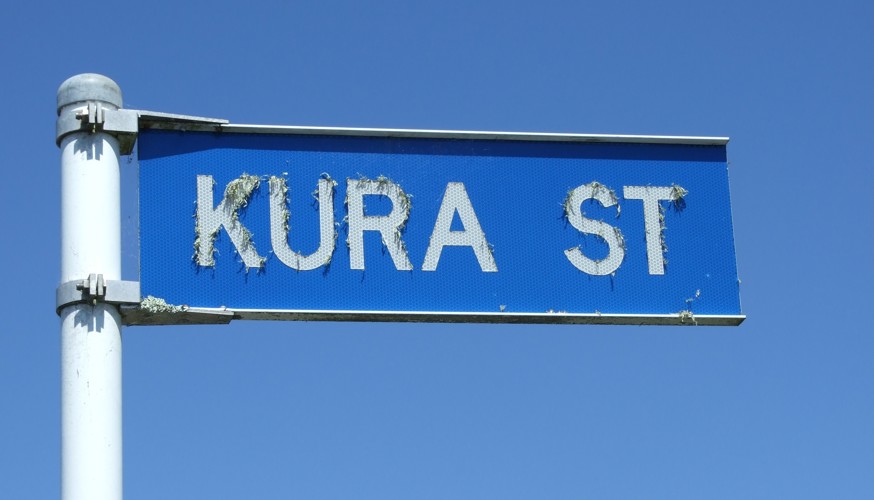 Kura Street sign (2016). Mike Gooch. Word on the Street image collection.
Kura Street sign (2016). Mike Gooch. Word on the Street image collection.
 Kura Street sign (2016). Mike Gooch. Word on the Street image collection.
Kura Street sign (2016). Mike Gooch. Word on the Street image collection.
Kura Street - short for Kurahaupō - is a cul-de-sac off Upjohn Street. Many iwi and Māori throughout Aotearoa can trace their whakapapa back to the voyage of Kurahaupō waka.
There are various versions of the journey of Kurahaupō. Ngāti- Apa, of the Rangitīkei, name Ruatea as the captain of the waka while Rangitāne folk say that Whatonga was the commander.
If Kurahaupō was the name of the waka in which Whatonga voyaged to Aotearoa in 1150, it should not be confused with the Kurahaupō waka which arrived about 1350.
Taranaki people believe that Te Moungaroa was the captain of the Kurahaupō and refer to it as 'Te Waka i Pakaru ki te moana' or 'The canoe broken at sea'.
Apparently, so the story goes, as the Kurahaupō was leaving Rangitāhua Island in the Kermadecs, it suddenly broke apart in the surf. It was then repaired and later continued the journey to Aotearoa, reputedly with Te Rangihokaia then as captain.
Others, though, say the crew from the wrecked Kurahaupō waka transferred to either the Mataatua or Aotea canoes. Another belief is that a reef off Māhia Peninsula on the east coast is supposed to be the petrified form of the Kurahaupō waka.
The captain, Te Moungaroa, claimed the Kurahaupō had been bewitched because the other chiefs were jealous of the precious kura or treasure he had brought with him. One account of the voyage relates that the treasure was, reputedly, something Te Moungaroa had sought and found in the realms of the underworld.
It could possibly be best defined as the esoteric knowledge of ancient beliefs and history as it did not appear to have been a material object.
Another version of the Kurahaupō story has the kura being red-coloured - perhaps even an amokura or tropic bird's long red tail feather from the Kermadecs.
Anyway, Te Moungaroa is reputed to have thrown it away when they arrived in Aotearoa and, from a distance, saw the blaze of red- flowering pōhutukawa on the shore.
This story was originally published in the Taranaki Daily News.
Please do not reproduce these images without permission from Puke Ariki.
Contact us for more information or you can order images online here.